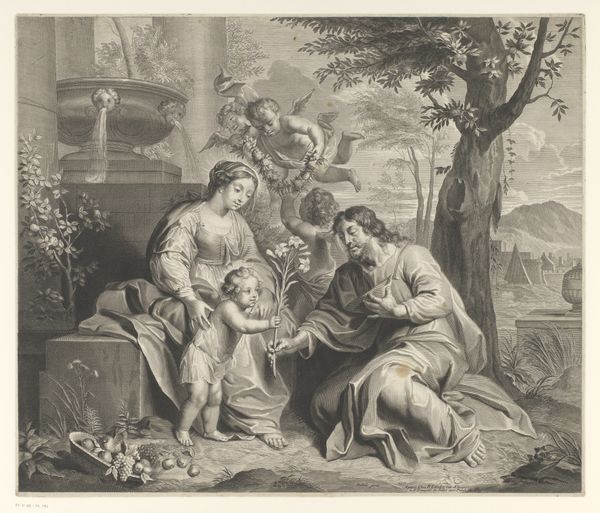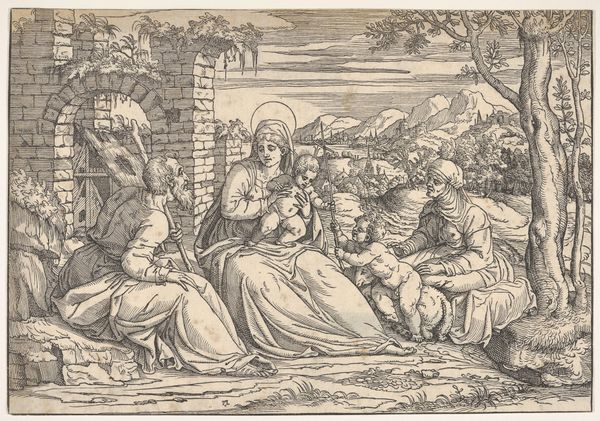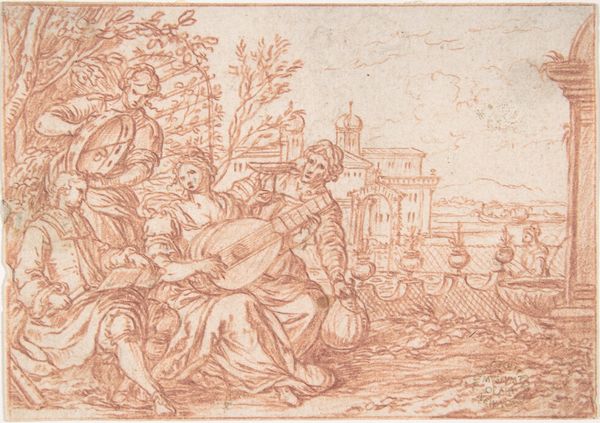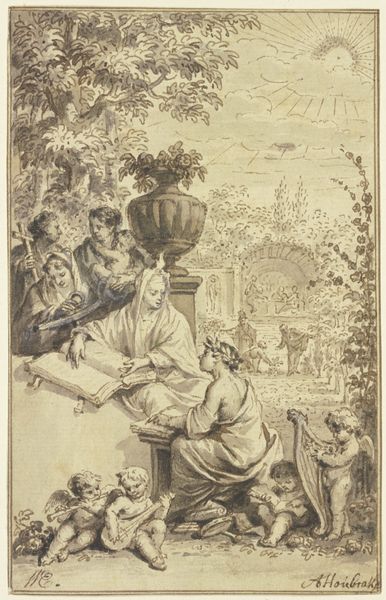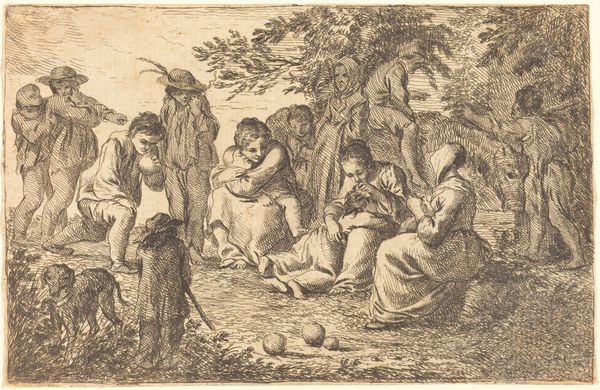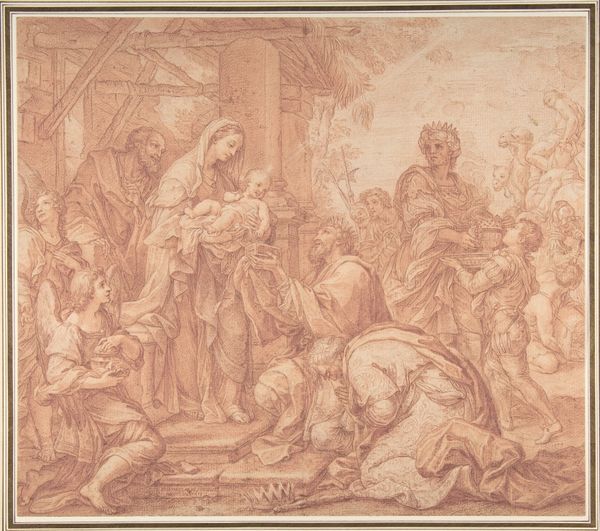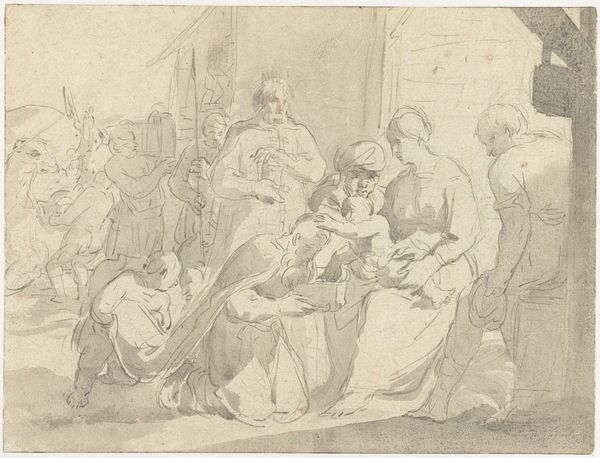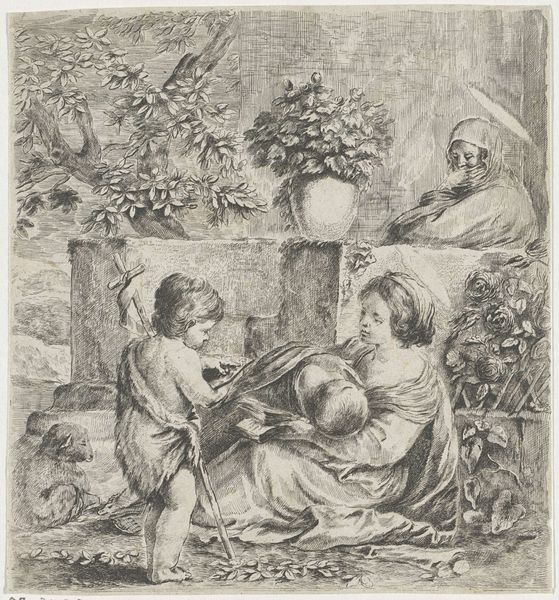
drawing, paper, ink
#
drawing
#
landscape
#
figuration
#
paper
#
11_renaissance
#
ink
#
history-painting
Dimensions: height 394 mm, width 485 mm
Copyright: Rijks Museum: Open Domain
This drawing of the Holy Family near a ruin was made with pen and brown ink, and brown wash. The choice of a humble medium contrasts with the exalted subject. While the artist remains anonymous, the materiality of the drawing speaks volumes. The brown ink, applied with meticulous precision, evokes a sense of warmth and intimacy. The use of brown wash softens the lines and adds depth to the composition. The paper itself, now aged and slightly discolored, bears witness to the passage of time. The ruin that provides the backdrop to the Holy Family adds to the drawing's social significance. Ruins, common in art of this period, were often used to symbolize the transience of earthly power, and the enduring nature of faith. The careful rendering of the stone blocks, overgrown with vegetation, suggests a deep appreciation for the past and a sense of continuity with tradition. In understanding the artwork fully, it becomes clear that the choice of materials, the skillful application of technique, and the thoughtful integration of social context, all contribute to the work's lasting appeal.
Comments
No comments
Be the first to comment and join the conversation on the ultimate creative platform.
